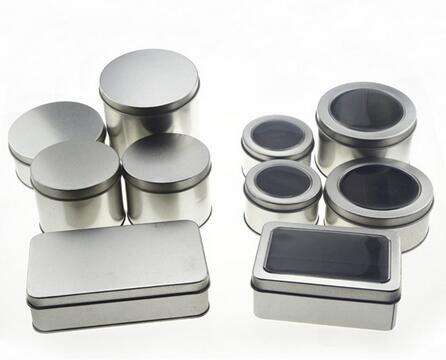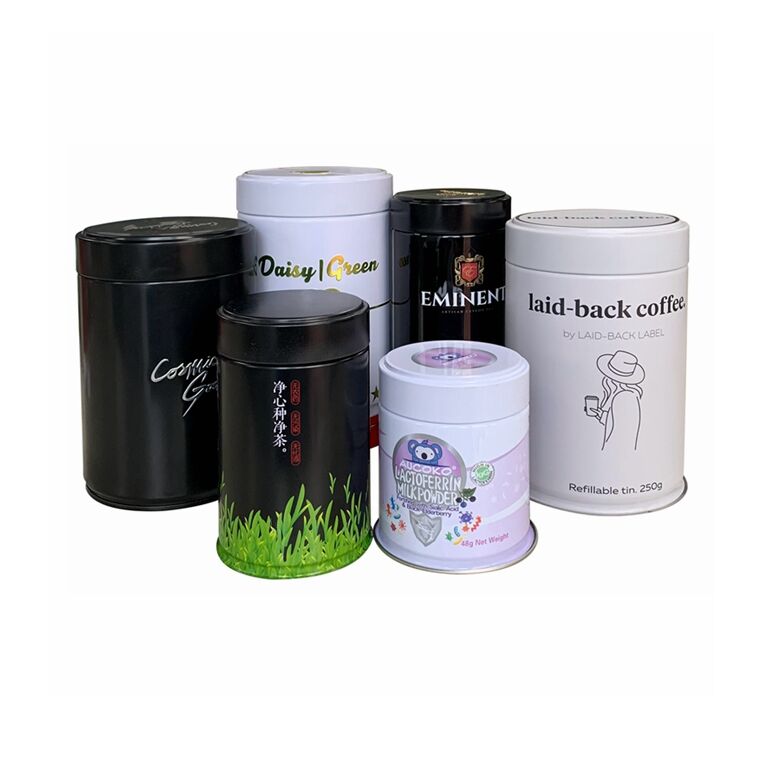הבנת ההשפעה הסביבתית של אריזות מזון ממתכת
מיכלים מתכתיים למזון, ובמיוחד פחיות, הפכו לחלק בלתי נפרד מהחיים היומיומיים שלנו, ושימשו ככלי אחסון אמינים לשימור ושמירה על מגוון מזונות. מיכלים נפוצים אלו ממלאים תפקיד חשוב בשורת האספקה המודרנית של המזון, אך סילוקם והשפעתם הסביבתית דורשים שיקול דעת. ככל שאנו נעשים מודעים יותר לאפקט האקולוגי שלנו, הבנת הדרך הנכונה לטפל בפחיות ולשנות אותן קניטר אינה חשובה יותר.
מדי שנה, מיליארדים של פחיות עוברים דרך המטבחים שלנו ונכנסים לזרמי הפסולת שלנו. החדשות הטובות הן שמיכלים אלו הם אחד החומרים הכי ניתנים לשינוע, עם יכולת להיבנות מחדש ללא הגבלה מבלי לאבד באיכותם. מאפיין יוצא דופן זה הופך אותם למשאב יקר ערך בהתקדמות שלנו לעבר אורח חיים בר-קיימא.
הרכב ותהליך ייצור המיכלים למוצרי מזון
חומרים ותהליך הבנייה
למרות שמם הנפוץ, פחיות עכשוויות עשויות בעיקר מפלדה עם שכבת אוקסיד כרומיום דקה או טינא. שכבת זה משמשת כשכבה מגינה, שמונעת חלודה ושומרת על ביטחון המזון. תהליך הייצור כולל יצירת לוחות של פלדה, ציפוי אותם בשכבה המגנה, ואז עיצובם לצורות הגליליות המוכרות לנו.
התפתחות ייצור הפחיות geführt לעיצובים יעילים יותר, תוך שימוש בחומר פחות תוך שמירה על יציבות מבנית. הצלחות של היום קלות בכ-30% בהשוואה לאלה של לפני שלושה עשורים, מה שממחיש התקדמות משמעותית בעקרונות ייצור בר-קיימא.
הטבות סביבתיות של אריזות מתכת
אריזות מתכת מציגות מספר יתרונות סביבתיים בהשוואה לחומרים חלופיים. פחיות עוזרות לצמצם בזבוז מזון הודות לתקופת המאגר הארוכה ולתכונות ההגנה שלהן. הן מגנות על התכולה מפני אור ומחמצן, שומרות על הערך התזונתי ובلا צורך בצורף, מה שתרום לשימור אנרגיה במהלך אחסון והובלה.
יתרה מכך, האופי החזק של פחיות אומר שהן יכולות לעמוד בתנאי ההובלה הקיצוניים עם נזק מינימלי, ולכן מפחיתות איבוד ומיחזור לאורך שרשרת האספקה. עמידות זו גם מבטיחה שהמכלים ישמרו שלמים לצורך מיחזור תקין.

שיטות מיחזור תקינות והכנה
שלבים חיוניים לפני מיחזור
לפני הכנסת קופסאות שימורים לפח המיחזור, הכנה נכונה היא קריטית להבטחת מיחזור יעיל. התחילו בריקון התכולה לחלוטין ובשטיפת המיכל כדי להסיר שאריות מזון. אמנם אין צורך להסיר תוויות נייר, אך ודאו שהפחית נקייה מונעת זיהום של חומרים אחרים הניתנים למחזור ועוזרת לשמור על איכות זרם המיחזור.
רבים מהאנשים שואלים האם כדאי לדחוס את הפחיות לפני מחזור. גם שאפשר לחסוך מקום בפח ההחזרה, יש לבדוק עם מתקן המחזור המקומי שלכם, מכיוון שחלק מהם מעדיפים פחיות לא דחוסות לצורך עיבוד קל יותר. הסירו את המכסה לגמרי אם הוא מחובר חלקית, מכיוון שזה עלול לגרום לבעיות בתהליך המחזור.
טעויות נפוצות במחזור שחשוב להימנע מהן
הבנה של מה שלא צריך לעשות חשובה בדיוק כמו ידיעת הליכי הריקולציה הנכונים. אין להכניס פחיות מתכת עם שאריות חומרים מסוכנים לסל הריקולציה. יש לטפל במכולות אלו באופן מיוחד ולפזר אותן בהתאם לחוקים המקומיים. כמו כן, אין לאגד את החומרים המרкупצים בתוך שקיות, שכן זה עלול לגרום לדחיה של ה entirety של השקית במכון הריקולציה.
טעות נפוצה נוספת היא ההנחה שכל מיכלי המתכת ניתנים לריקולציה באותה צורה. בעוד שרוב הפחיות ניתנות לריקולציה בקלות, מיכלים ששימשו לשמירת צבע, חומרים כימיים או מוצרים באerosol עשויים להידרש טיפול מיוחד או אולי לא יהיו ניתנים לריקולציה במסגרת התוכניות הסטנדרטיות.
תהליך הריקולציה והיתרונות שלו
מהאיסוף עד לחדש מוצרים
אחרי האיסוף, פחיות הניילון מתחילות את דרכן בתהליך המחזור. הן ממוינות, נקיות ומקוטעות לחתיכות קטנות. חתיכות אלו מומסות בטמפרטורות גבוהות, מזוקקות ויוצרות מוצרים חדשים מפלדה. האנרגיה שנחסכת ע"י מחזור של טון אחד של פלדה יכולה לספק חשמל לבית למעלה מחצי שנה, מה שמדגיש את היתרונות הסביבתיים המשמעותיים של תהליך זה.
הגיוון של פלדה מחזורית אומר שפחיות הניילון שלך עשויות להפוך למגוון מוצרים, החל ממכלי מזון חדשים ועד לחלקי רכב או חומרי בניין. מערכת הלולאה הסגורה הזו מדגימה את הכלכלת המעגל בפעולה, בה חומרים מושמים בשימוש חוזר באופן מתמיד במקום להיזרק.
יתרונות כלכליים וסביבתיים
מחזור של פחיות מתכת יוצר תועלת כלכלית משמעותית לצד היתרונות הסביבתיים. התעשייה תומכת באלפי מקומות עבודה, תוך שהיא מפחיתה את הצורך בהפקת חומרים גולמיים. כרייה ועיבוד של חומרים חדשים דורשים בדרך כלל הרבה יותר אנרגיה ומשאבים בהשוואה לשימוש חוזר בחומרים קיימים.
יתרה מכך, מחזור של מיכלי מתכת עוזר לצמצם את הפליטה של גזי חממה הקשורים לייצור חומרים חדשים מאפס. כל טון של פלדה משומשת שמועבד מחדש חוסך כ-1.5 טון של רכיבי ברזל ומפחית את פליטות הפחמן הדו-חמצני בכ-86%.
שימושים חדשניים ורעיונות לשימוש חוזר יצירתי
פרויקטים יצירתיים לבית
לפני שתשימו את הפחיות במחזור, שיקלו על הפוטנציאל שלהן לשימוש חוזר יצירתי. פחיות נקיות יכולות להפוך לפחים מקסימים לצמחי תבלין או פרחים קטנים, וליצור גינות אנכיות או תצוגות על פתחי חלונות. עם מעט דקורציה, הן הופכות למכילים אטרקטיביים לאחסון ציוד לציור, כלי מטבח או פריטי משרד.
מאנשי מלאכה פיתחו דרכים רבות לשימוש חוזר בפחיות מתכת ליצירת פריטים שימושיים ודקוריים. בין אם מדובר בייצור פנסים, צלצלי רוח או פתרונות ארגון, הפרויקטים האלה מאריכים את חיי המכולות ובמקביל מקטינים את כמות הפסולת.
יישומים חינוכיים וקהילתיים
בתי ספר ומراكז קהילתיים משתמשים לעיתים קרובות בפחיות מתכת נקיות במגוון פרויקטים וחינוכיים ופעילויות. הן משמשות כחומר מעולה להוראת ילדים על מחזור, יצירה ידנית ואחראית סביבתית. גני קהילה משתמשים בהם לעתים קרובות מחדש כתאי שתילה או כלים לפרויקטים של שימור קומפוסט ומים.
יוזמות השימוש החוזר היצירתיות האלה לא רק מקטינות את כמות הפסקולת, אלא גם עוזרות להעלות מודעות לתחום הקיימות ושימור המשאבים בתוך הקהילות. הן מדגימות כיצד פריטים יומיומיים יכולים למצוא מטרה חדשה באמצעות חדשנות ויצירתיות.
שאלות נפוצות על מחזור פחיות מתכת
האם עלי להסיר את התוויות הנייר לפני מחזור פחיות מתכת?
אמנם אין צורך להסיר תוויות נייר מקופסאות שימורים לפני המיחזור, אך עליהן להיות נקיות וללא שאריות מזון. תהליך המיחזור נועד להתמודד עם תוויות נייר, אשר נשרפות בשלב ההיתוך. עם זאת, הסרתן יכולה להפוך את תהליך המיחזור ליעיל מעט יותר.
האם ניתן למחזר פחיות מתכת שהכילו מוצרים שאינם מזון?
היכולת למחזר פחיות מתכת שהכילו פריטים שאינם מזון תלויה בתכולתן. כלי אחסון שמכילים חומרים לא רעילים ניתנים למחזור בדרך כלל באמצעות תוכניות סטנדרטיות. לעומת זאת, פחיות שמכילות צבע, חומרים כימיים או חומרים מסוכנים דורשות טיפול מיוחד וצריכות להיזרק דרך ערוצי בירור מוסדיים לחומרים מסוכנים.
עד כמה נקיות צריכות להיות הפחיות המתכת לצורך מחזור?
פחיות אמורות להיות נקיות במידה סבירה אך אינן צריכות להיות נקיות לגמרי. שטיפה מהירה להסרת שאריות מזון גלויות היא מספיקת. זיהום מזון מفرט יכול להשפיע על תהליך ההחזרה ועלול למשוך טפילים במהלך אחסון ותחבורה. יש להימנע משימוש במים או בסבון בכמות מוגזמת, שכן המטרה היא פשוט להסיר את הזיהומים העיקריים.

 EN
EN
 AR
AR BG
BG HR
HR CS
CS DA
DA NL
NL FI
FI FR
FR DE
DE EL
EL IT
IT JA
JA KO
KO NO
NO PL
PL PT
PT RO
RO RU
RU ES
ES SV
SV CA
CA IW
IW ID
ID LV
LV LT
LT SR
SR SK
SK SL
SL UK
UK VI
VI SQ
SQ HU
HU TR
TR FA
FA MS
MS GA
GA CY
CY LA
LA